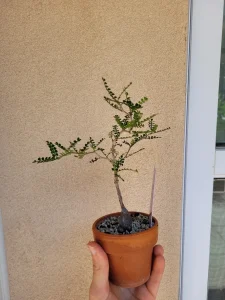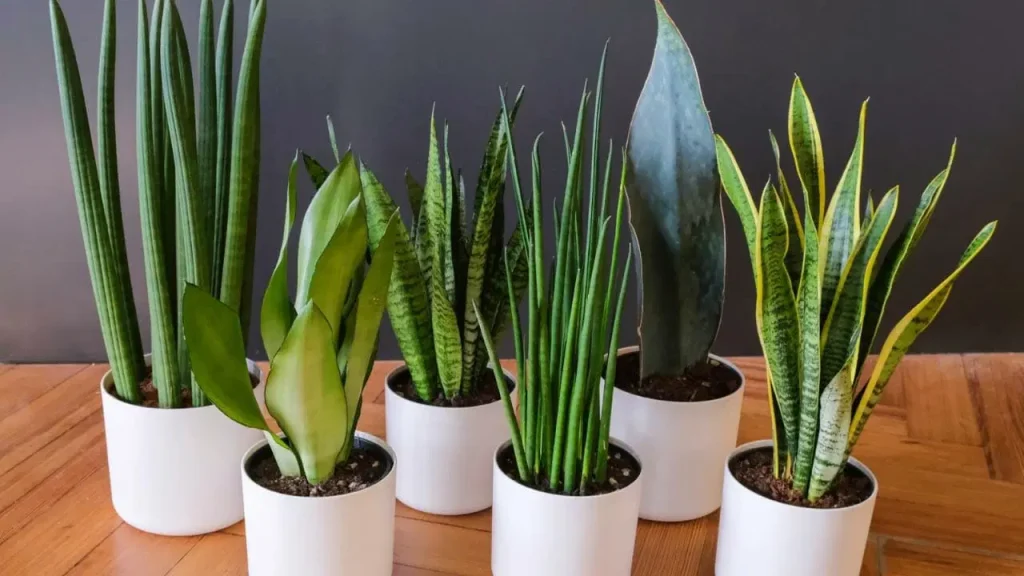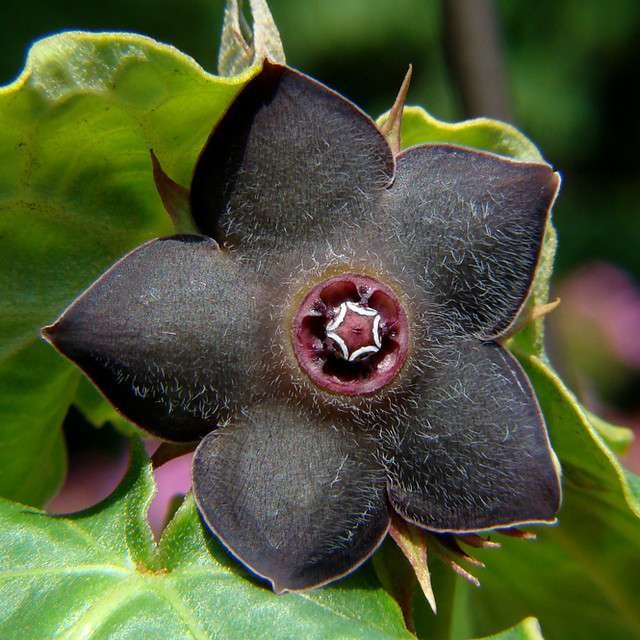Care for Your Operculicarya Pachypus
Operculicarya pachypus, commonly known as the Bottle Tree or Elephant’s Foot, is a unique and striking succulent native to Madagascar. This plant is especially admired for its thick, swollen trunk, which resembles an elephant’s foot, and its ability to store water, making it quite drought-tolerant. Here’s a bit more about it:
Key Features: & Care for Your Operculicarya Pachypus
- Trunk: The most distinctive feature of Operculicarya pachypus is its bulbous, swollen trunk, which stores water, helping it survive in arid conditions.
- Leaves: The plant has small, oblong leaves that grow in clusters along the branches. These leaves are typically green, though the plant can shed them during the dormant period.
- Growth Habit: It is a slow-growing plant that can develop into a small tree-like shape, reaching heights of up to 3-4 feet (1 meter) when grown indoors. In its native habitat, it may grow larger.
Unique Characteristics:
- The swollen trunk is a water-storing adaptation that helps the plant survive dry conditions.
- It goes through a dormant period in the winter, shedding its leaves and requiring minimal care during this time.
- This plant is relatively low-maintenance, making it a great choice for beginner succulent enthusiasts.
Aesthetics & Care for Your Operculicarya Pachypus:
Operculicarya pachypus is valued for its distinctive appearance, making it a great conversation piece in homes and gardens. The bulbous trunk and branch structure resemble the silhouette of a tree and can develop into a striking bonsai-like form with proper care.
Here are some key care instructions:
1. Light Requirements & Care for Your Operculicarya Pachypus:
- Bright, Indirect Light: Operculicarya pachypus thrives in bright, indirect light. Too much direct sunlight can cause the leaves to scorch, so it’s best to place it near a window with filtered light.
- If you’re growing it indoors, a location with a few hours of direct sunlight in the morning or late afternoon would be ideal.
2. Watering:
- Water Sparingly: Like most succulents, this plant prefers to dry out between waterings. Water thoroughly, but ensure the soil is dry before watering again. Overwatering can lead to root rot.
- Drought Tolerant: During the growing season (spring and summer), water every 2-3 weeks. In the dormant season (fall and winter), water even less frequently.
- Ensure the pot has good drainage to avoid standing water.
3. Temperature:
- Warm Temperatures: Operculicarya pachypus prefers temperatures between 65-85°F (18-29°C).
- Avoid placing it in drafts or near cold windows, as it doesn’t tolerate cold temperatures well (below 50°F or 10°C).
4. Soil:
- Well-Draining Soil: Use a cactus or succulent mix, or create your own by mixing potting soil with sand or perlite for extra drainage.
- The plant is susceptible to root rot if the soil doesn’t drain properly.
5. Fertilizing:
- During Growing Season: Feed your Operculicarya pachypus with a diluted, balanced liquid fertilizer during the growing season (spring and summer) once a month.
- Winter Dormancy: Avoid fertilizing during the fall and winter when the plant is dormant.
6. Potting & Repotting:
- Slow Grower: Operculicarya pachypus is a slow-growing plant, so it doesn’t need to be repotted frequently. Repot it every 2-3 years or when the roots outgrow their pot.
- Choose a pot that’s just a little larger than the root system to avoid excess moisture retention.
7. Pruning:
- This plant generally doesn’t need pruning, but if it becomes too leggy or you want to shape it, trim back the stems as needed. Use clean, sharp scissors to avoid damaging the plant.
8. Pest Control & Care for Your Operculicarya Pachypus:
- Operculicarya pachypus is relatively pest-resistant, but keep an eye out for common houseplant pests like scale or aphids.
- If pests are detected, treat the plant with insecticidal soap or wipe the leaves with a damp cloth.
9. Humidity:
- Low to Average Humidity: This plant prefers lower humidity levels. It’s well-suited to dry, indoor environments.
10. Rest Period & Care for Your Operculicarya Pachypus:
- During winter, it might go dormant. Reduce watering significantly during this time and ensure it’s kept in a cool place with indirect light.
With these care guidelines, your Operculicarya pachypus can thrive and eventually grow into the striking “bottle tree” shape it’s known for. It’s a great plant for both novice and experienced succulent lovers due to its resilience and unique look.





